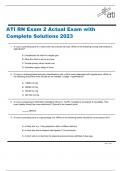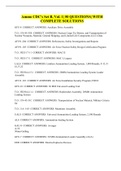Exam (elaborations)
Test Bank for Cell Biology, 4th Edition by Thomas D. Pollard
- Course
- Institution
Test Bank for Cell Biology 4e 4th Edition by Thomas D. Pollard, William C. Earnshaw, Jennifer Lippincott-Schwartz, Graham Johnson. Full Chapters test bank are included - Chapter 1 to 48 SECTION I Introduction to Cell Biology 1 Cells as the Basis of Life on Earth 2 Evolution of Life on Earth ...
[Show more]












